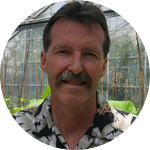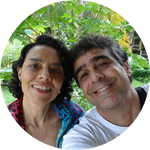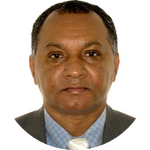About This Project
Roundworms constitute 4/5 of all individual animals on Earth, and they´re key players in the sustainability of oceans, lakes and forests worldwide. In the forests, roundworms have been studied in the soil, but no one has ever sampled the forests` canopy for them. Science knows virtually nothing about canopy roundworms` abundance, ecology and functional roles in the ecosystem. We´ll climb to the top of Brazil´s Atlantic Forest to reveal these and other aspects of canopy roundworms.
Ask the Scientists
Join The DiscussionWhat is the context of this research?
Roundworms make up 4/5 of all individuals animals on Earth. By feeding avidly on bacteria, fungi and other critters roundworms contribute a great deal to the sustainability of ecosystems worldwide, such as oceans and forests. In forests, roundworms have been studied in soil and lakes, where they are as abundant as important to recycle nutrients and energy to sustain the forest. Surprisingly, roundworms have never been looked for in the forests´ canopy.
The forests` canopy hosts key processes for life on Earth e.g., photosynthesis, and an enormous biodiversity, from microorganisms to primates. In the dynamic field of canopy biology there remains a huge gap: how many and how diverse are canopy roundworms? What is their contribution to the sustainability of forests?
What is the significance of this project?
What if the forests` canopy harbors a staggering abundance and diversity of roundworms? The society at large, and ecologists in particular would be short of fathom how forests sustain themselves.
For the first time the canopy will be sampled systematically for roundworms. We`ll reveal the abundance and diversity of roundworms, unveil aspects of their ecology, and attempt to estimate their contribution to the forest´s ecology.
By sampling and comparing the community of canopy nematodes in 3 distinct areas of Brazil`s rain forest we may find patterns associated with altitute, rainfall regime and floristics. In sum, we´ll characterize the diversity and ecology of the Earth`s most abundant metazoans in the least studied ecosystem - the forest canopy.
What are the goals of the project?
We`ll sample 3 parks distinct in size and altitude: the E.E.E. Guaxindiba (8 M acres at 25 masl); the P.E. Pedra Azul (3 M acres at 600-900 masl) and the P.N. Serra do Caparaó (78 M acres at 1,200-1,500 masl). In each park we´ll set 4 125x125m plots with 4 25x25m subplots each. Two trees will be sampled/subplot. Mosses and organic debris will be scraped from 70 cm2 sampling points in the trunk and main branch, and 70 cm2 of leaves will be collected.
The roundworms will be extracted from the 288 samples and identified to genus level. We´ll calculate the parameters abundance (total, relative, trophic); diversity and dominance (Shannon-Wiener, Pielou, Simpson indexes); and ecological stability (Bongers´ maturity, Ferris` indexes) to understand the ecology of canopy nematodes.
Budget
We have no funding for this project, and we have not applied to other funding platforms or agencies. The proposed budget is the minimum necessary to our study since it includes only items related to the field trips and the examination of the roundworms in the laboratory.
All the necessary equipments to sample processing (sieves, centrifuge) and nematode identification (light and stereo microscopes) already exist in the Nematology laboratories run by Profs. Ricardo, Felipe and Juvenil at UENF, FSM and UnB, respectively.
Endorsed by
 Project Timeline
Project Timeline
Our project will have 5 milestones: conducting the canopy samplings; performing the taxonomic identification of the roundworms; conducting the ecological calculations using the software Ninja; data interpretation; and writing the final report to Experiment and article(s) to be submitted to scientific journals.
Nov 30, 2022
Project Launched
Feb 28, 2023
Travel to the sampling areas; sampling of forests` canopy
Nov 30, 2023
Taxononomic identification of the canopy roundworms to genus level
Jan 31, 2024
Entering data on nematode abundance, trophic groups, genera incidence etc in the software Ninja. Run the analysis to obtain ecological indexes
Mar 31, 2024
Interpretation of the ecological indexes and their relations
Meet the Team
Affiliates
Affiliates
Affiliates
Ricardo M. Souza
I´m a professor and scientist at UENF, a state university in Brazil. My research focuses on roundworms that are parasitic on plants as well as free-living forms that live in the tropical rain forest.
In the rain forest we`ve studied the ecology of roundworms that live inside bromeliads (1,2,3). With support from Experiment, we´ve applied a roundworm discovered in the rain forest to control de mosquito Aedes aegypti (see the project here ). You can see our laboratory, research team and publications here.
In addition to my university duties, I´ve served for two terms (2013-2019) as the president of the Brazilian Nematological Society, and I´m the founder of the NGO Amigos which campaings for public awareness of kidney diseases and provides multi-professional assistance to kidney patients.
Juvenil Enrique Cares
I´m a professor and scientist at University of Brasília, Brazil. My research focuses on plant-parasitic roundworms, with particular emphasis on morphology and taxonomy.
Alexandre Almeida
I´m a research assistant in the nematology laboratory at UENF. I conducted my master and doctorate trainings on plant-parasitic and free-living roundworms, respectively, under the guidance of Prof. Ricardo M. Souza.
Felipe da Silva Costa
I´m a professor and scientist at FASM (Brazil), where my research focuses on insect-parasitic roundworms. I also coordinate the statewide program of initiation of undergrad students to Science. My academic training includes a DS in Materials Science, a master in Plant Science and a undergrad major in Biology.
Thaís de Moraes Ferreira
I´m a biologist with a master degree in Plant Science. I´ll conduct this research project as my doctorate thesis, under the guidance of Prof. Ricardo M. Souza
Project Backers
- 11Backers
- 19%Funded
- $566Total Donations
- $51.45Average Donation







